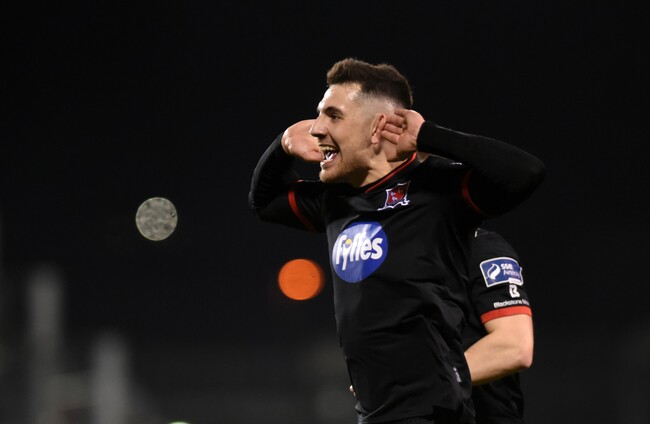“I THINK IT’S the tip of the iceberg of what we can do in this country if we have a plan and are backed”, said Stephen Bradley after his side’s rip-roaring 3-2 win over Dundalk last Friday night.
It was difficult not to be utterly enthralled by it all: a high-tempo, high-scoring game in a gleaming ground filled with 7,500 people that featured three good goals, one great goal, and one break-the-internet-on-its-way-to-Match-of-the-Day-and-ESPN goal from Jordan Flores.
It was equally difficult not to proselytise either; to tell all who might listen that this is what Irish football can be.
Niall Quinn appeared on the Late Late Show and made a similar point, and it’s understood that he was central to ensuring Flores’ goal got some airtime and was pushed to the forefront of Ireland’s most mainstream media platform.
So how do we keep it there?
The mood music from the new FAI regime is encouraging – something noted by television and commercial insiders too – but there’s a big job of work to do as RTÉ’s viewing figures for the League remain poor.
Although the Flores goal has more than five million views on RTÉ’s Twitter, the viewership of the game itself peaked at 90,000 – just after the goal – and averaged out at 59,600 for an audience share of 5%.
For context, RTÉ’s coverage of the weather event/Gaelic football clash between Tyrone and Dublin the following night drew more than 200,000 people.
This was the best League of Ireland audience on RTÉ since 73,200 people tuned into watch Dundalk lift the title with a 3-2 win over Rovers last September, and the broadcaster consistently gets better numbers on U20 and women’s Six Nations games.
This season’s clash between Derry City and Finn Harps drew 37,700, while a clash between Cork City and Shamrock Rovers last year had an average audience of 39,700.
These figures are too low.
While RTÉ’s public service remit is an important factor in discussions, industry sources say Head of Sport Declan McBennett’s threshold of success is an audience of at least 100,000 people.
Questions are asked around the merits of anything drawing between 50-100,000 people, while anything dipping below 50,000 is subject to serious questions about its long-term viability. At the moment, the League of Ireland is at the wrong end of those figures, stirring memories of the late George Byrne’s lament during RTÉ’s 1994 World Cup coverage that the League is “a minority sport.”
How do you boost them?
Sure, RTÉ, the FAI and the League could do more to market and promote live games, but there is a belief among some that, when it comes to the casual TV viewer, the League of Ireland has an issue with its branding.
Consequently, television revenue is tiny. According to a Uefa benchmarking report for 2018 published earlier this year, the League of Ireland derives just 1% of its income from a domestic TV rights deal.
On top of it all, this TV rights deal may be about to become a harder sell. Since 2014, the television rights for competitive international matches have been sold centrally by Uefa (you may remember this move was hailed as one of John Delaney’s signature successes in his farewell statement from the governing body) and thus can’t be bundled with rights to domestic matches.
Most international friendly matches are now sold centrally too, a contract which almost led Ireland to the farcical situation of needing to play a friendly game away to the loser of the other semi-final of the Euro 2020 play-off should they lose to Slovakia.
With Ireland on the hook to play three friendly games this year, this abject scenario has been avoiding by arranging a trio of friendlies from the end of May ahead of Euro 2020, one of which is understood to be against Luxembourg at Thomond Park.
With a TV deal for the 2021 season yet to be agreed, it looks unlikely at the moment that the League will be able to sell its rights as a bundle with a couple of senior men’s international friendlies.
So can the FAI and the League convince those willing to listen that they are worth investing in?
This is one of the earliest challenges for the new regime at the FAI, and the promise of last Friday night in Tallaght must be built upon rather than squandered.


